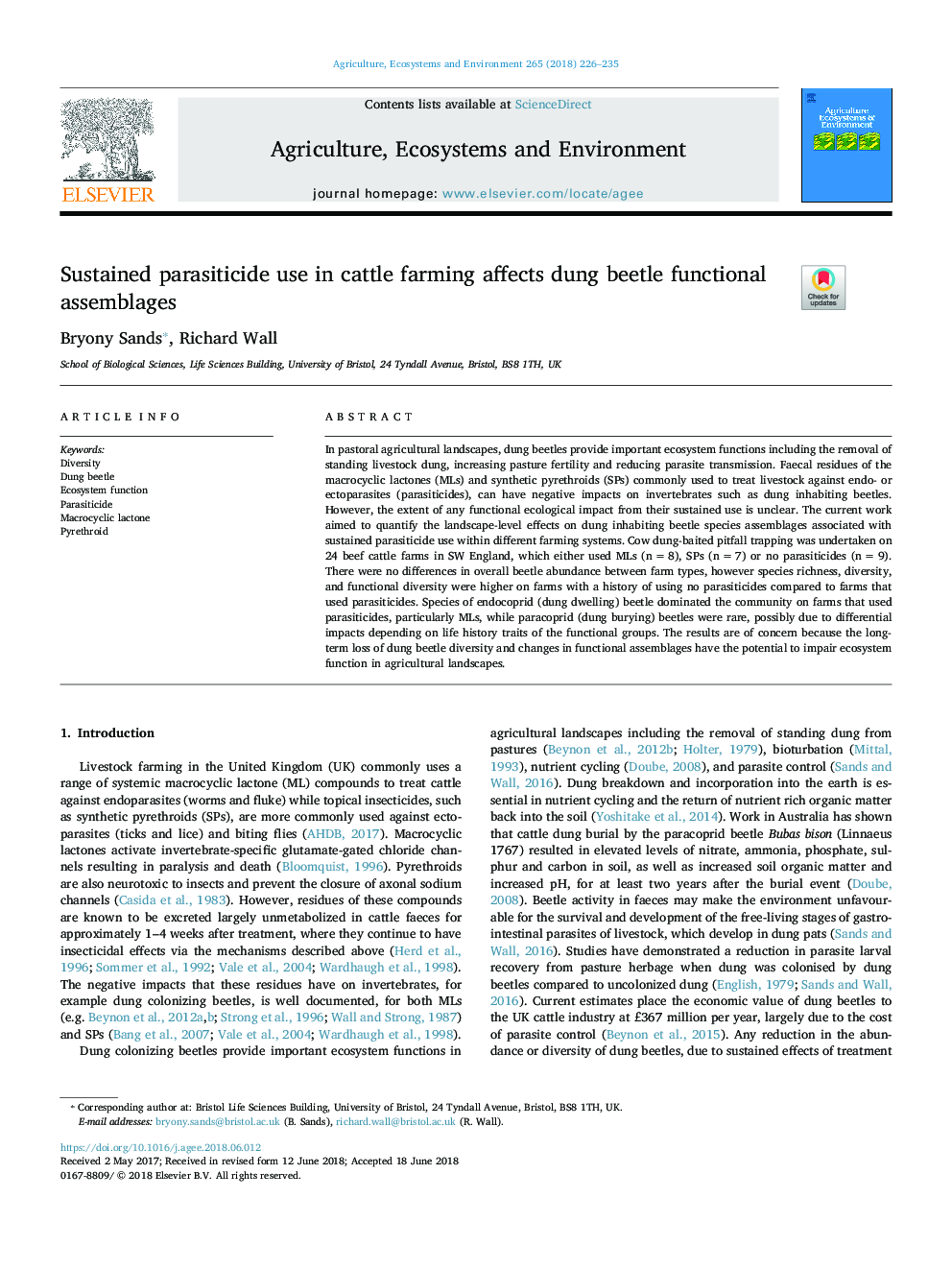| Article ID | Journal | Published Year | Pages | File Type |
|---|---|---|---|---|
| 8486979 | Agriculture, Ecosystems & Environment | 2018 | 10 Pages |
Abstract
In pastoral agricultural landscapes, dung beetles provide important ecosystem functions including the removal of standing livestock dung, increasing pasture fertility and reducing parasite transmission. Faecal residues of the macrocyclic lactones (MLs) and synthetic pyrethroids (SPs) commonly used to treat livestock against endo- or ectoparasites (parasiticides), can have negative impacts on invertebrates such as dung inhabiting beetles. However, the extent of any functional ecological impact from their sustained use is unclear. The current work aimed to quantify the landscape-level effects on dung inhabiting beetle species assemblages associated with sustained parasiticide use within different farming systems. Cow dung-baited pitfall trapping was undertaken on 24 beef cattle farms in SW England, which either used MLs (nâ¯=â¯8), SPs (nâ¯=â¯7) or no parasiticides (nâ¯=â¯9). There were no differences in overall beetle abundance between farm types, however species richness, diversity, and functional diversity were higher on farms with a history of using no parasiticides compared to farms that used parasiticides. Species of endocoprid (dung dwelling) beetle dominated the community on farms that used parasiticides, particularly MLs, while paracoprid (dung burying) beetles were rare, possibly due to differential impacts depending on life history traits of the functional groups. The results are of concern because the long-term loss of dung beetle diversity and changes in functional assemblages have the potential to impair ecosystem function in agricultural landscapes.
Related Topics
Life Sciences
Agricultural and Biological Sciences
Agronomy and Crop Science
Authors
Bryony Sands, Richard Wall,
